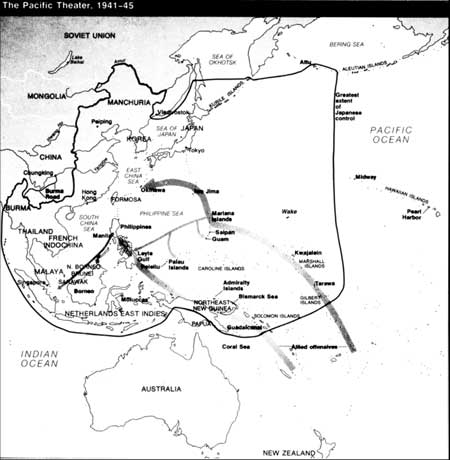|
War in the Pacific: Outbreak of the War
History of the Outbreak of the War in the Pacific
The underlying causes of the outbreak of the war in
the Pacific relate to Japan's desire to effectively compete with the
industrialized nations of western Europe and the United States. As an
island nation, Japan had very few natural resources of her own and,
therefore, looked elsewhere for raw materials to supply her growing
industrial base. Japan felt that Asia and the western Pacific islands
were inside her spheres of influence, and resented the presence of other
colonial powers such as Britain, France, Holland, and the United States.
Following the invasion of China, and subsequent occupation of French
Indo-China, the Japanese felt increasing pressure from the United
States, including economic embargoes, and concluded that war was the
only solution. Japan's need for resources found expression in a
determination to achieve dominance in the Pacific by forceful means. The
opening attacks caught the Allies by surprise and unprepared for war;
the initial Japanese victories were stunning. Japan controlled a huge
area in the Pacific, and her impressive victories continued.
Once the decision for war had been reached, the
Japanese strategists decided a surprise raid on Pearl Harbor was the
best chance of gaining the necessary objectives in Asia and the Pacific.
The attack on Pearl Harbor corresponded with attacks on other Allied
possessions in the region, such as the Philippines, Guam, Wake Island,
the Dutch East Indies, Malaya, and Hong Kong. Although Wake Island and
Guam were not rich in natural resources, the Japanese wanted these
islands to consolidate their holdings throughout the western Pacific and
strengthen their defensive perimeter.

Map of the South Pacific. (click on image
for an enlargement in a new window)
|

|